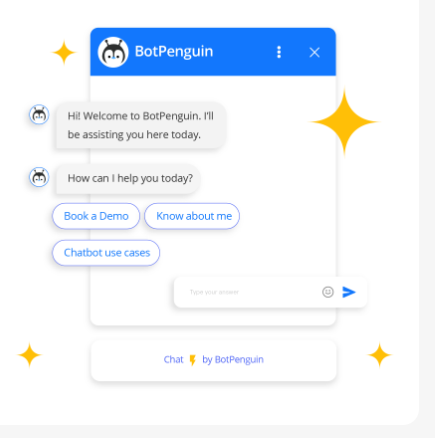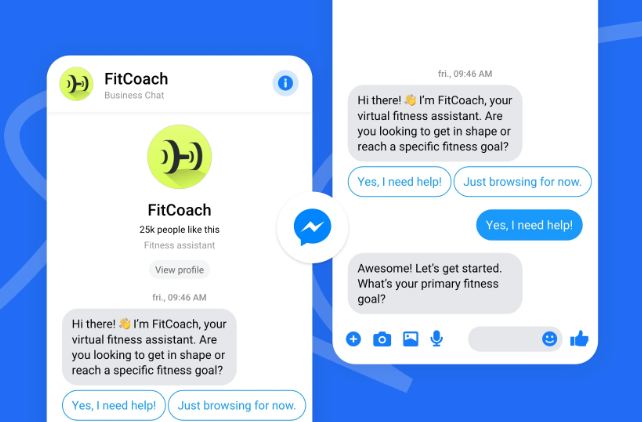Are you thinking about creating a chatbot for your business? You’re not alone. Chatbots have quickly become a popular AI tool. If you use Facebook Messenger, you’ve likely interacted with one.
In fact, according to a Facebook report, over 300,000 active chatbots are on Facebook Messenger alone. This number is staggering for a technology that only gained mainstream attention a few years ago.
Chatbots aren’t limited to just Facebook anymore; they’re making appearances on websites across various industries. Why? The barriers that once prevented people from using chatbots are being removed. More customers are comfortable interacting with chatbots than ever before.
In this guide, we’ll explain what chatbot machine learning is and provide an easy-to-follow approach to building your own chatbot for business purposes.
What is Chatbot Machine Learning?

Before we dive into how to build a chatbot, it’s important to understand what “machine learning” means in this context.
Machine learning is a branch of artificial intelligence that allows systems to learn and improve from experience without being explicitly programmed.
In the case of chatbots, machine learning enables the chatbot to interact with users, understand their inputs, and respond intelligently.
Chatbot machine learning refers to the use of algorithms that allow a chatbot to learn from data. As the chatbot processes more conversations, it becomes better at recognizing patterns, understanding language, and providing meaningful responses.
Chatbots powered by machine learning can operate 24/7 and engage users in human-like conversations. The success of these bots largely depends on the quality of the data used to train them and the machine learning models applied.
Steps to Build a Machine-Learning Chatbot
Let’s break down the steps to create a chatbot using machine learning. The goal is to create a product that requires minimal human intervention.
1. Accumulate Data

The first step in building a chatbot is gathering data. To train a chatbot, you need large datasets that mimic real conversations. These can include previous customer interactions, chat logs, or publicly available data from platforms like forums or social media.
The data should be as detailed as possible, covering a wide range of conversation topics. In machine learning terms, this is called “creating a data ontology” — essentially organizing and collecting all the data your chatbot will need to understand and respond to users.
The quality and quantity of your data will determine how well your chatbot performs. More data means better performance and more human-like conversations.
Suggested Reading:
How Businesses Can Leverage Machine Learning Development?
2. Pre-Process Your Data
After gathering your data, the next step is to pre-process it. Pre-processing involves cleaning and organizing the data to ensure it’s in a format that a machine can understand.
For example, you might need to split conversations into individual message-response pairs. This allows your chatbot to learn from human-to-human dialogue and predict the appropriate response for a given input.
In this stage, you should also limit unnecessary details, like responses that took more than five minutes, to keep the training data consistent.
Your chatbot should be able to mimic real-life conversation. The goal is to eliminate the “robotic” feel and make interactions with the bot feel more natural.
3. Add Language Processing Capabilities

Once your data is pre-processed, the next step is to teach your chatbot how to understand and generate language. This involves natural language processing (NLP), which breaks down text into a format that a machine can understand.
The NLP process includes tokenizing, stemming, and lemmatizing. Tokenizing involves breaking down sentences into individual words or tokens. Stemming and lemmatizing simplify words to their base form. For instance, “running” would be reduced to “run.”
This process also teaches the chatbot to handle common errors, such as grammatical mistakes, spelling errors, and slang. For example, if someone asks the chatbot a question with improper grammar, the chatbot should still be able to interpret the question correctly.
4. Choose the Type of Chatbot: Generative or Retrieval-Based

There are two main types of machine-learning chatbots: generative and retrieval-based.
- Generative Chatbot: This type of chatbot doesn’t rely on a predefined set of answers. Instead, it generates responses based on the input it receives, often using neural networks.
Generative chatbots are more flexible and can answer a wider variety of questions. However, they require more training and are more complex to build.Retrieval-Based Chatbot: This chatbot relies on a predefined database of responses. It matches user inputs with the most relevant response in its dataset. While these bots are easier to build and more reliable, they are limited in the scope of conversations they can handle.
For most businesses, a retrieval-based chatbot is a good starting point. However, if you’re looking for a more advanced solution, a generative chatbot may be the way to go.
Suggested Reading:
Machine Learning Development: Trends and Predictions
5. Develop Word Vectors
In conversations, people often use abbreviations and acronyms like “LOL” or “TTYL.” To make your chatbot more conversational, it’s important to build a list of common acronyms and slang, also known as word vectors.
Word vectors help the chatbot understand commonly used phrases and expressions. You can either manually compile a list or use pre-built models from platforms like TensorFlow.
6. Build a Seq2Seq Model

Once your data is ready, you need to create a model that will allow the chatbot to predict and generate responses. A common approach is to use a Sequence-to-Sequence (Seq2Seq) model, which is particularly useful for generating text-based conversations.
If you’re familiar with Python, you can build a Seq2Seq model using TensorFlow, an open-source machine learning framework. The model will help your chatbot learn patterns in conversation and produce relevant responses based on the input it receives.
7. Train and Test Your Chatbot

After building the Seq2Seq model, it’s time to train your chatbot. Training involves feeding the chatbot data and allowing it to learn how to respond to various inputs.
Testing is an essential part of this process. Test the chatbot with different queries to ensure it provides relevant responses.
You can also adjust hyperparameters like learning rates, optimizer selection, and the number of training iterations to fine-tune the bot’s performance.
8. Launch Your Chatbot

Once the chatbot has been tested and fine-tuned, it’s time to launch. You can deploy the chatbot on your website, app, or messaging platforms like Facebook Messenger.
A soft launch to a smaller group of users will allow you to gather feedback and make any necessary improvements.
Suggested Reading:
Machine Learning Development in Action: Real World Use-Cases
9. Continuously Improve the Chatbot
Building a chatbot is an ongoing process. After launch, monitor how users interact with it and collect feedback. Add new datasets based on customer interactions to keep the bot’s knowledge base up to date.
Over time, you can fine-tune the chatbot’s performance to ensure it continues to provide high-quality responses.
Conclusion
Machine-learning chatbots have revolutionized how businesses interact with customers, offering 24/7 support and faster response times.
By following the steps outlined in this guide, you can build a chatbot that not only meets your business needs but also improves over time with continuous learning.
Platforms like BotPenguin simplify the process, allowing businesses to create chatbots without needing deep technical knowledge. Whether you’re building a generative or retrieval-based chatbot, the future of customer support lies in machine learning and AI-driven solutions.
How to Create a Powerful Chatbot Using Machine Learning was originally published in Chatbots Life on Medium, where people are continuing the conversation by highlighting and responding to this story.

